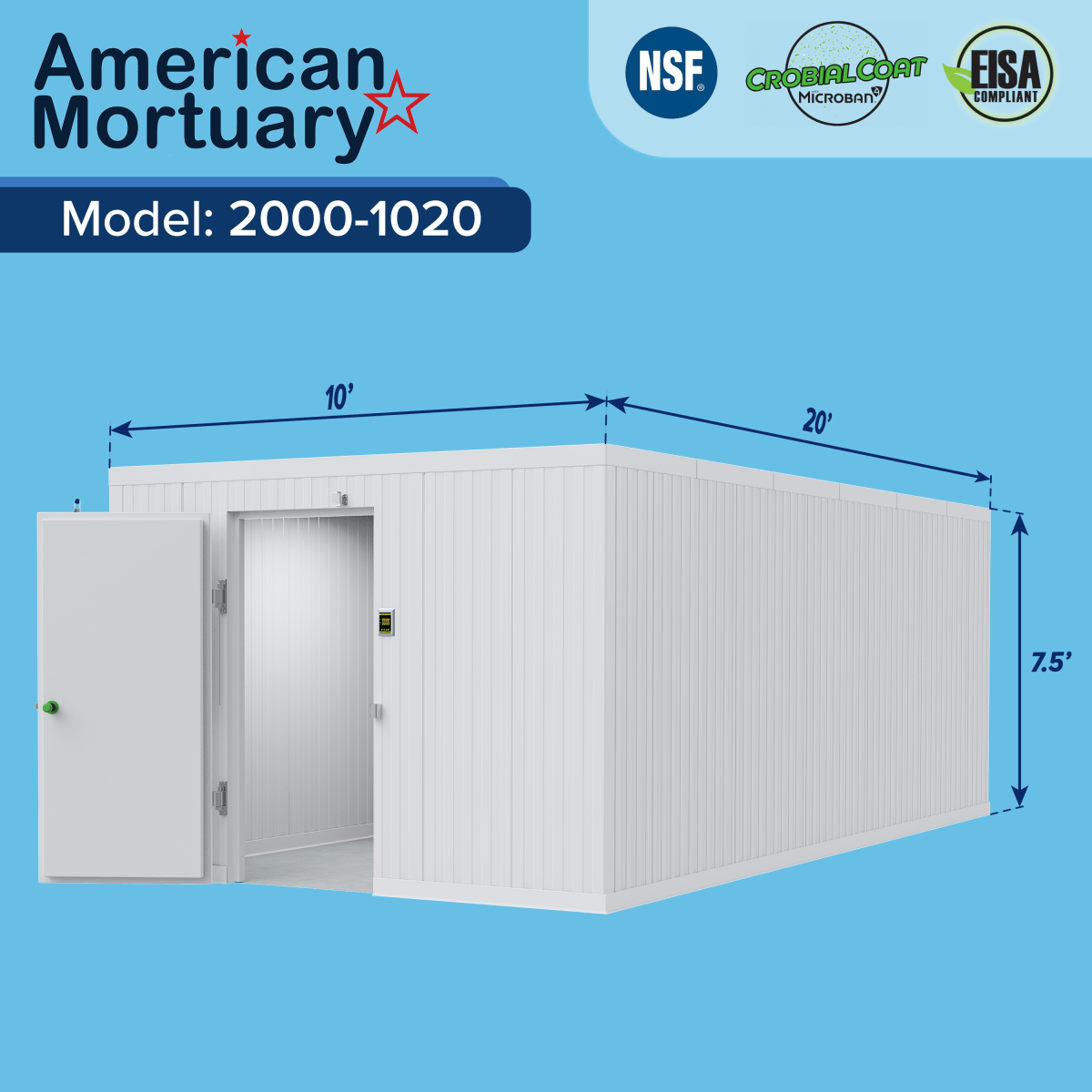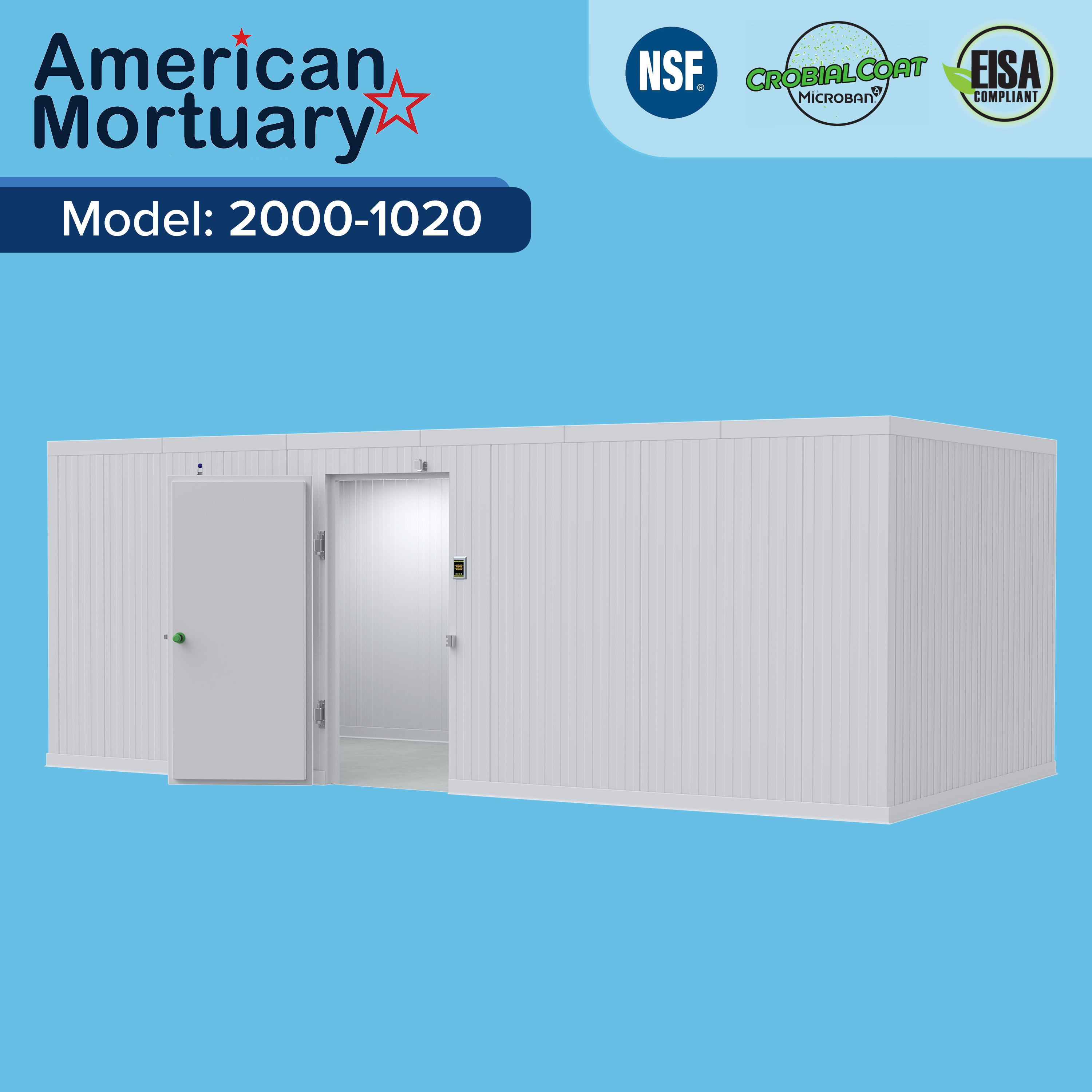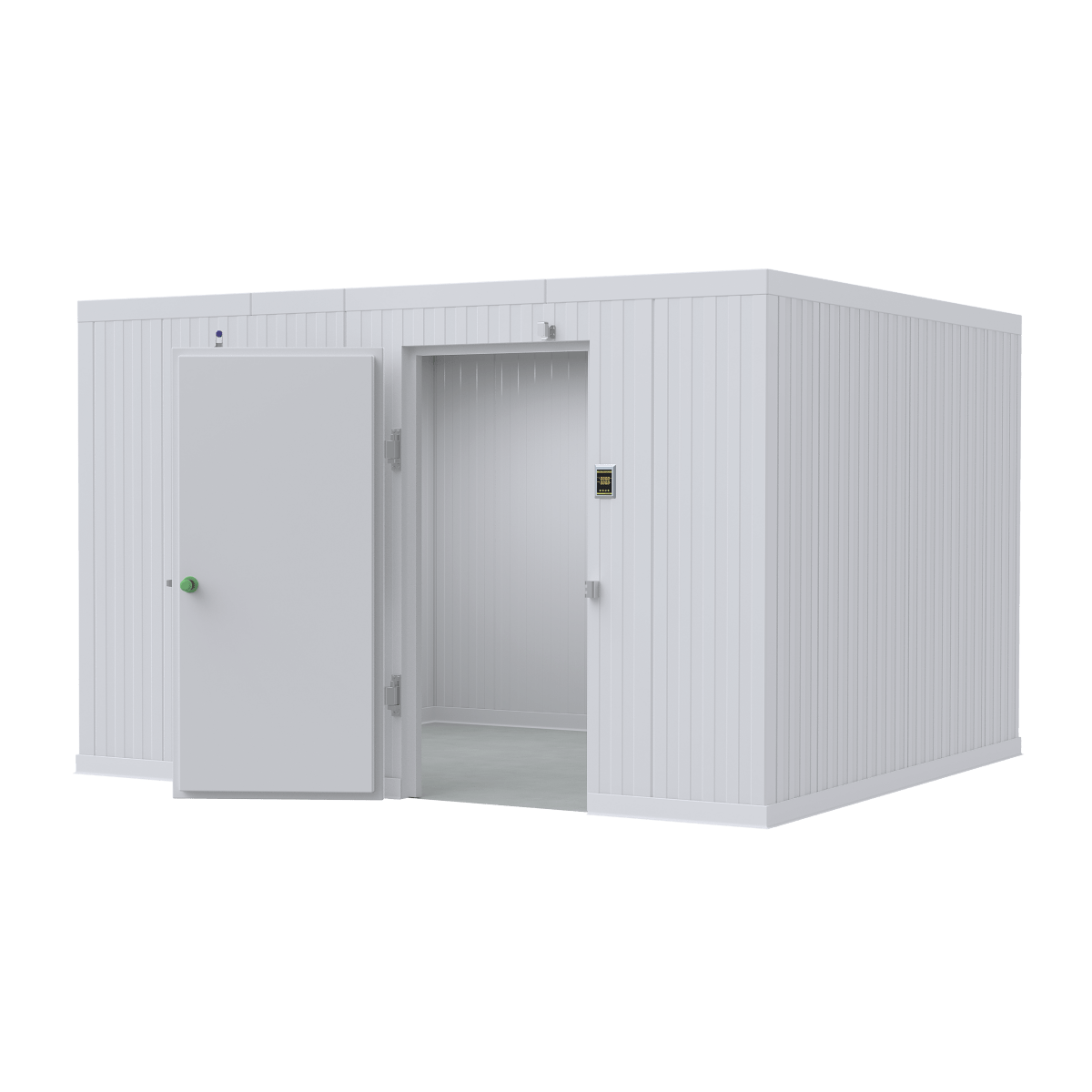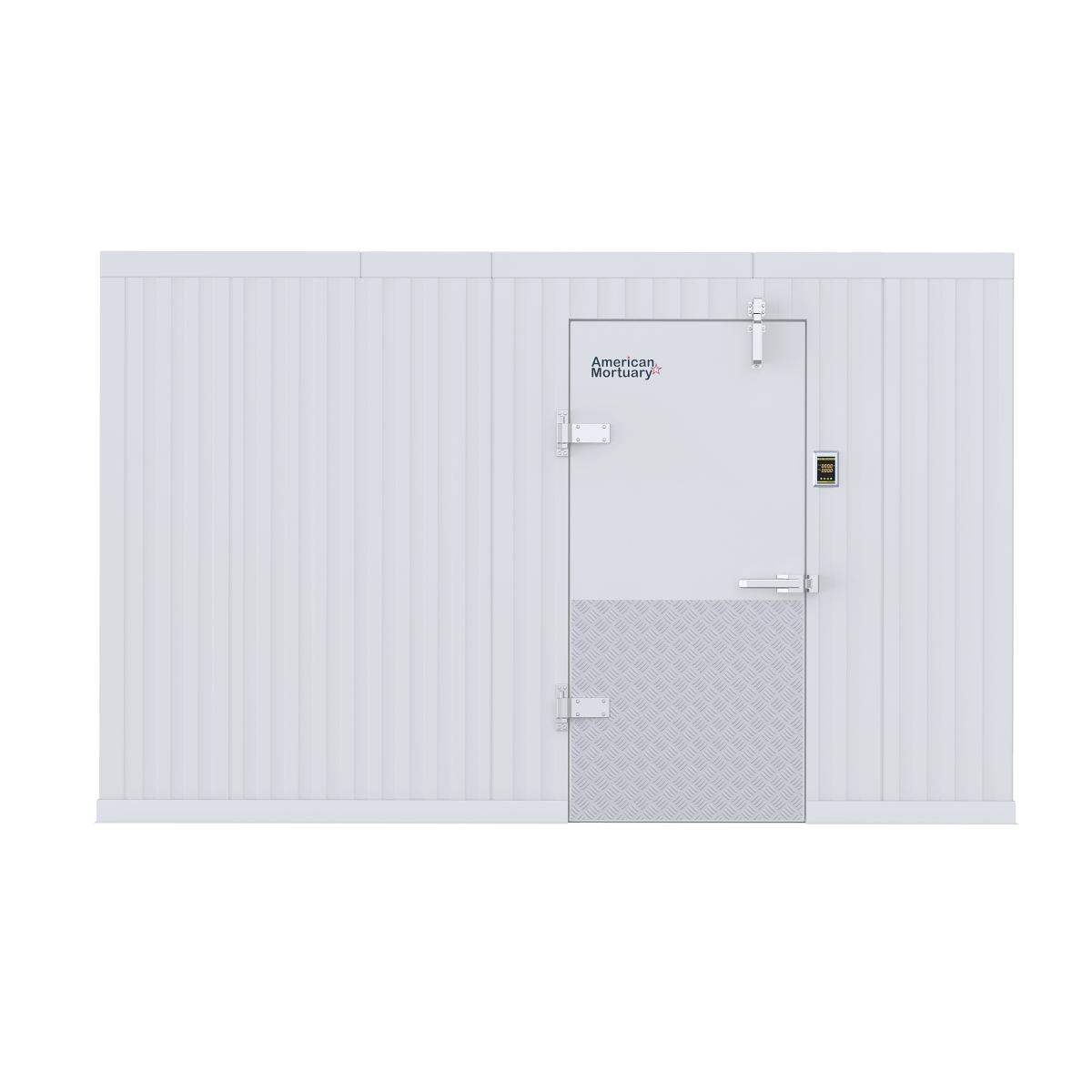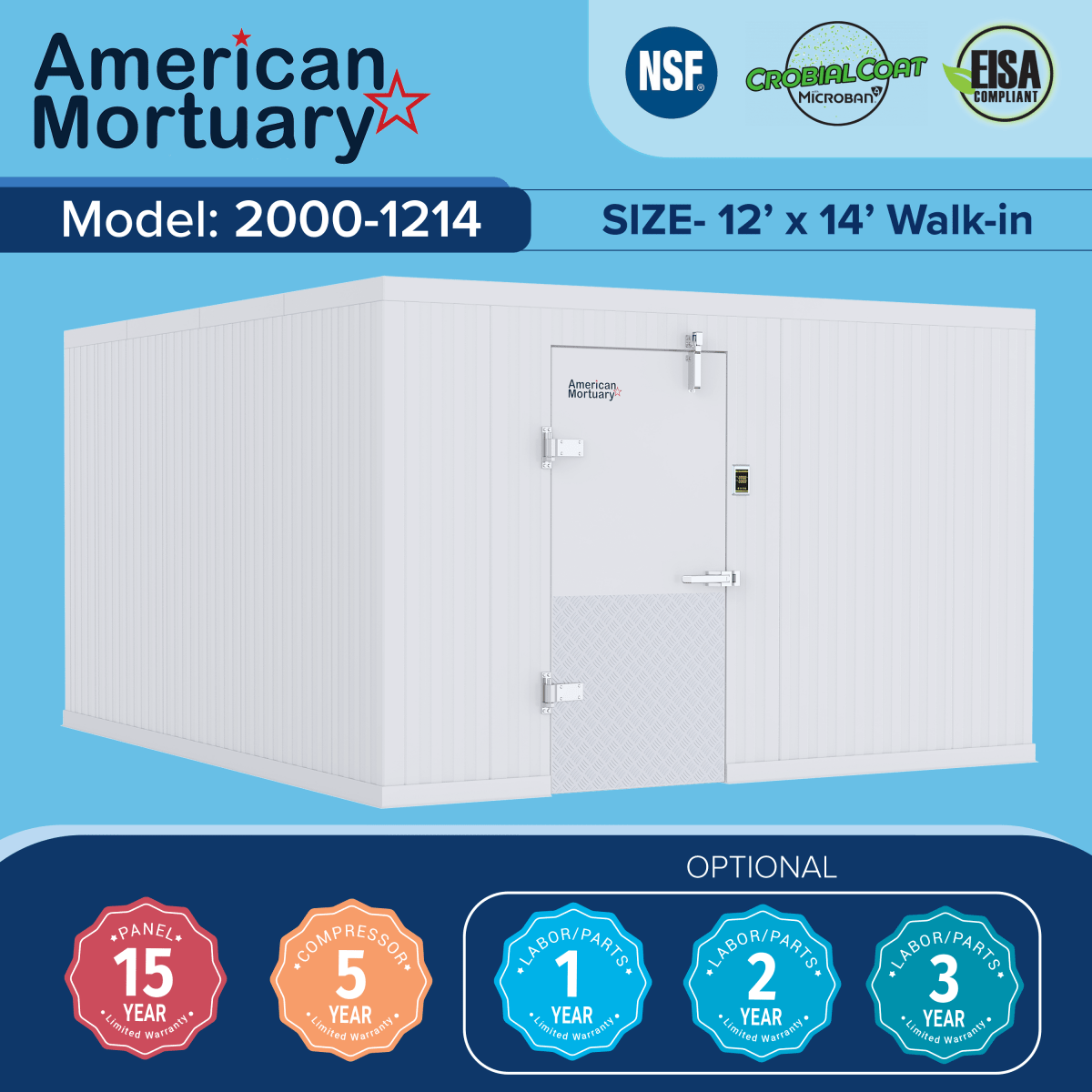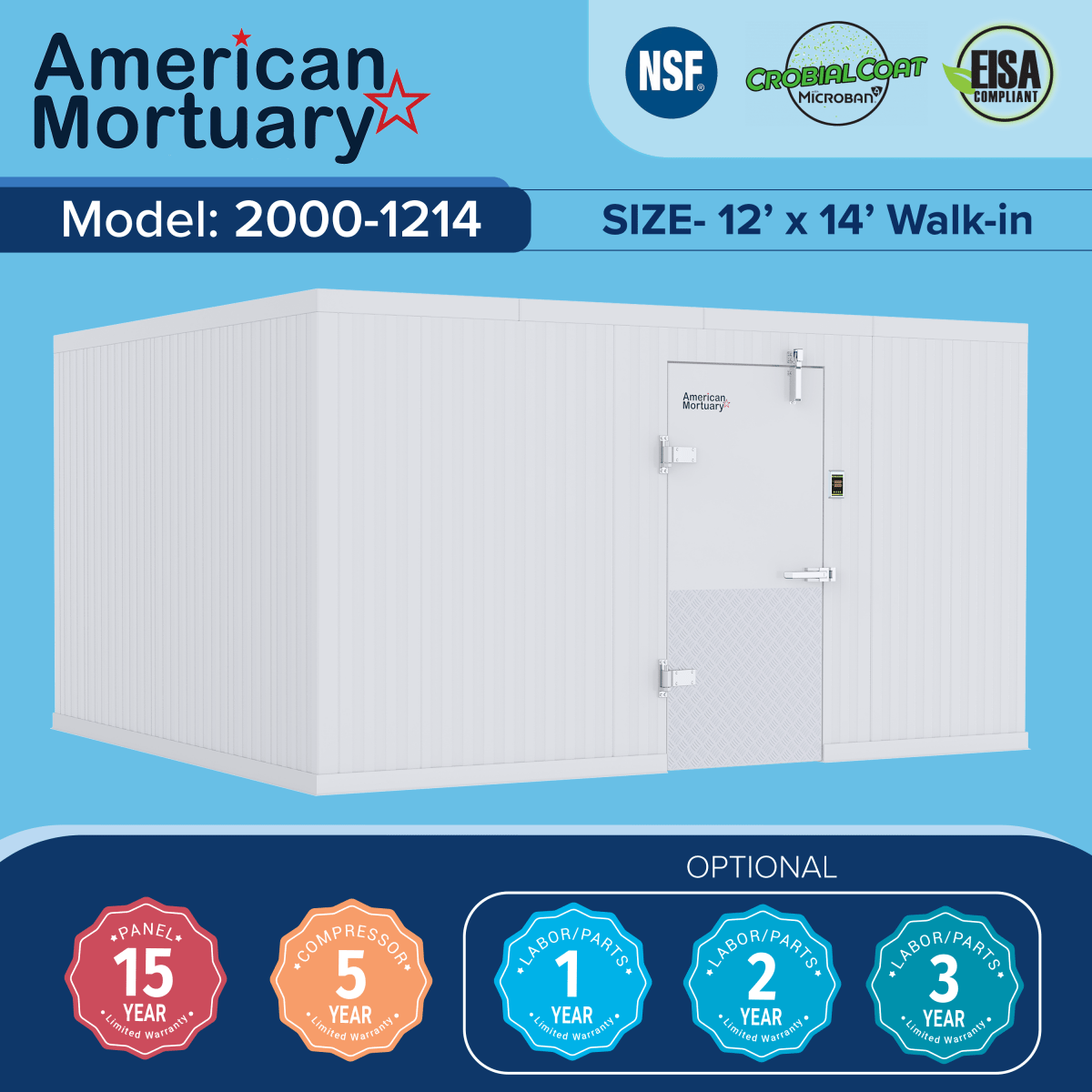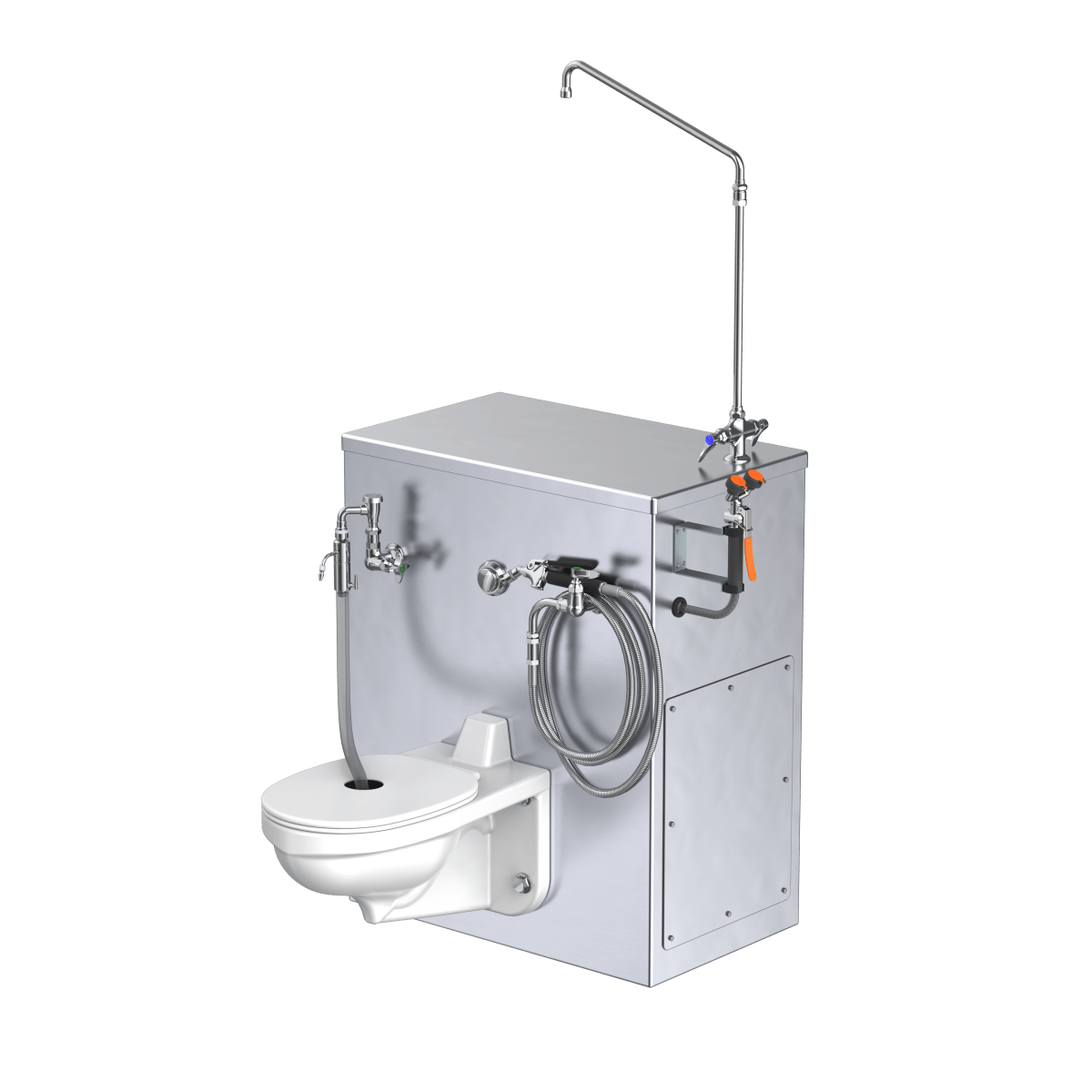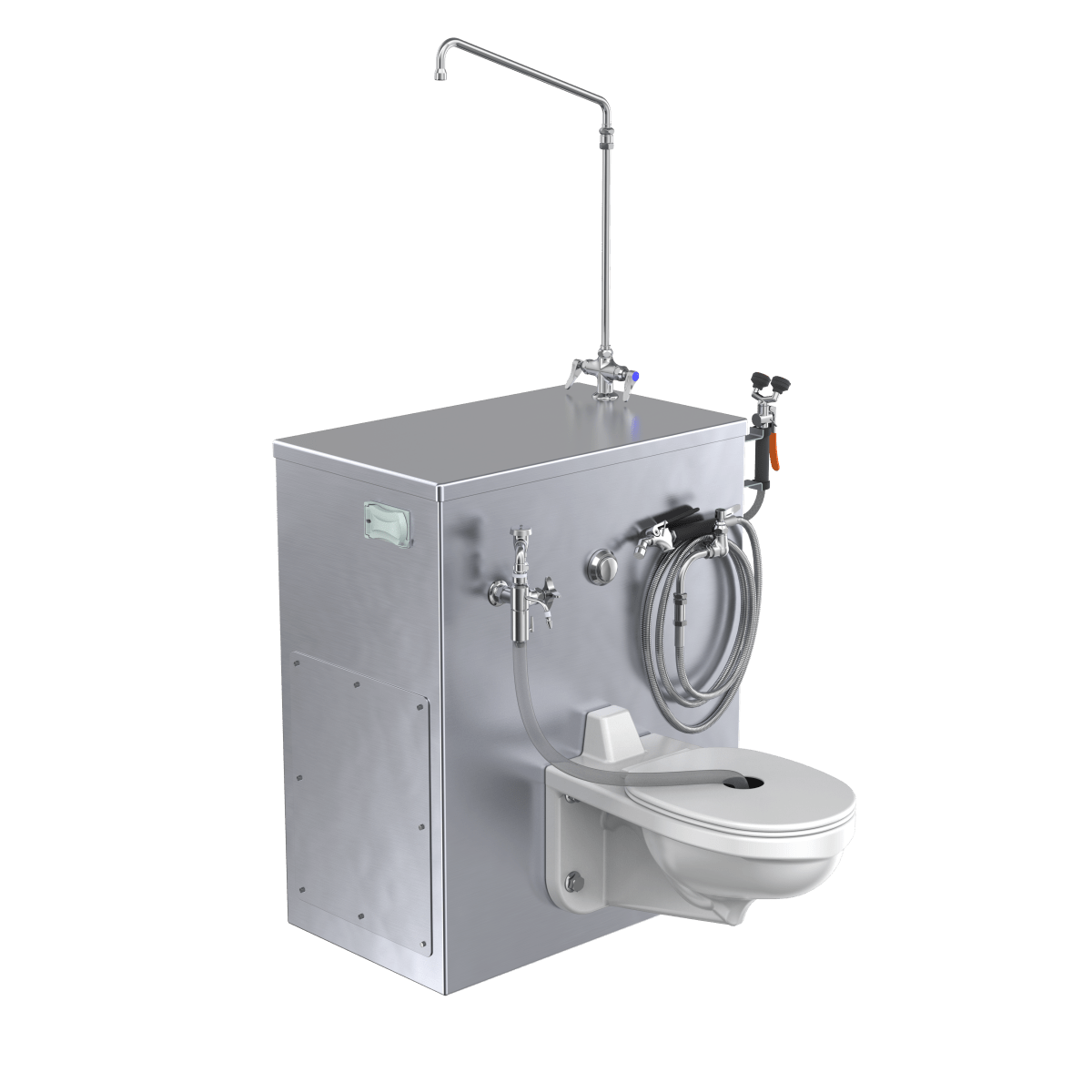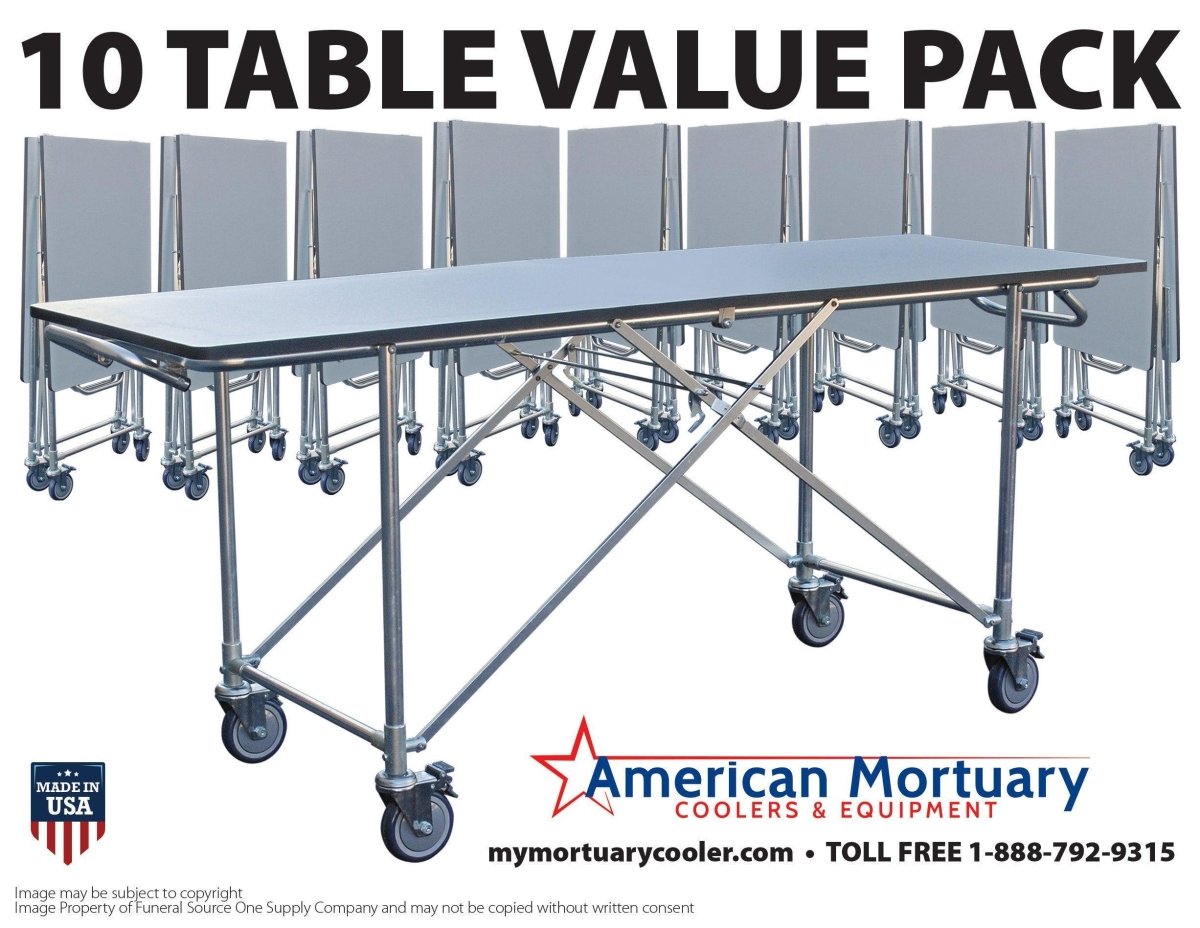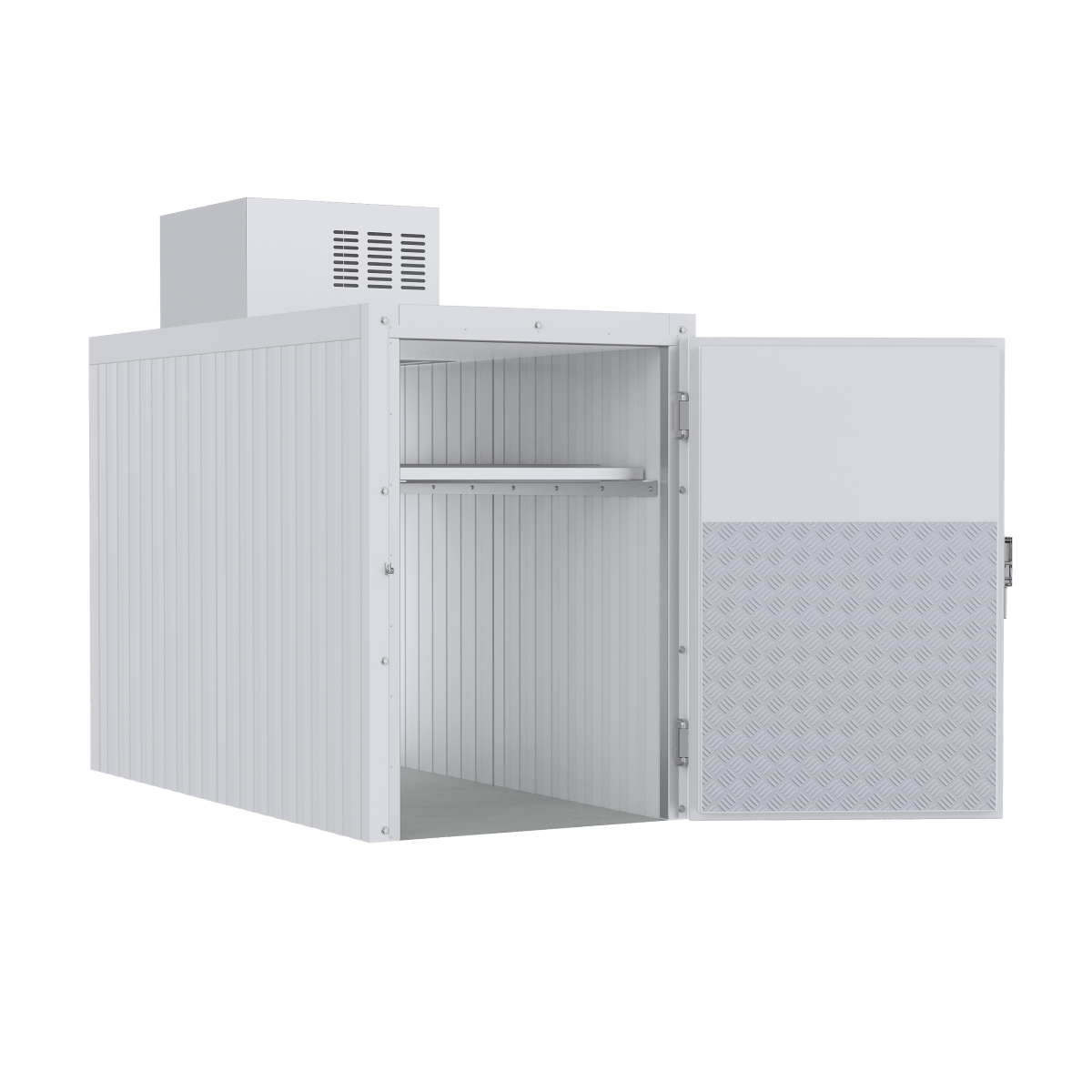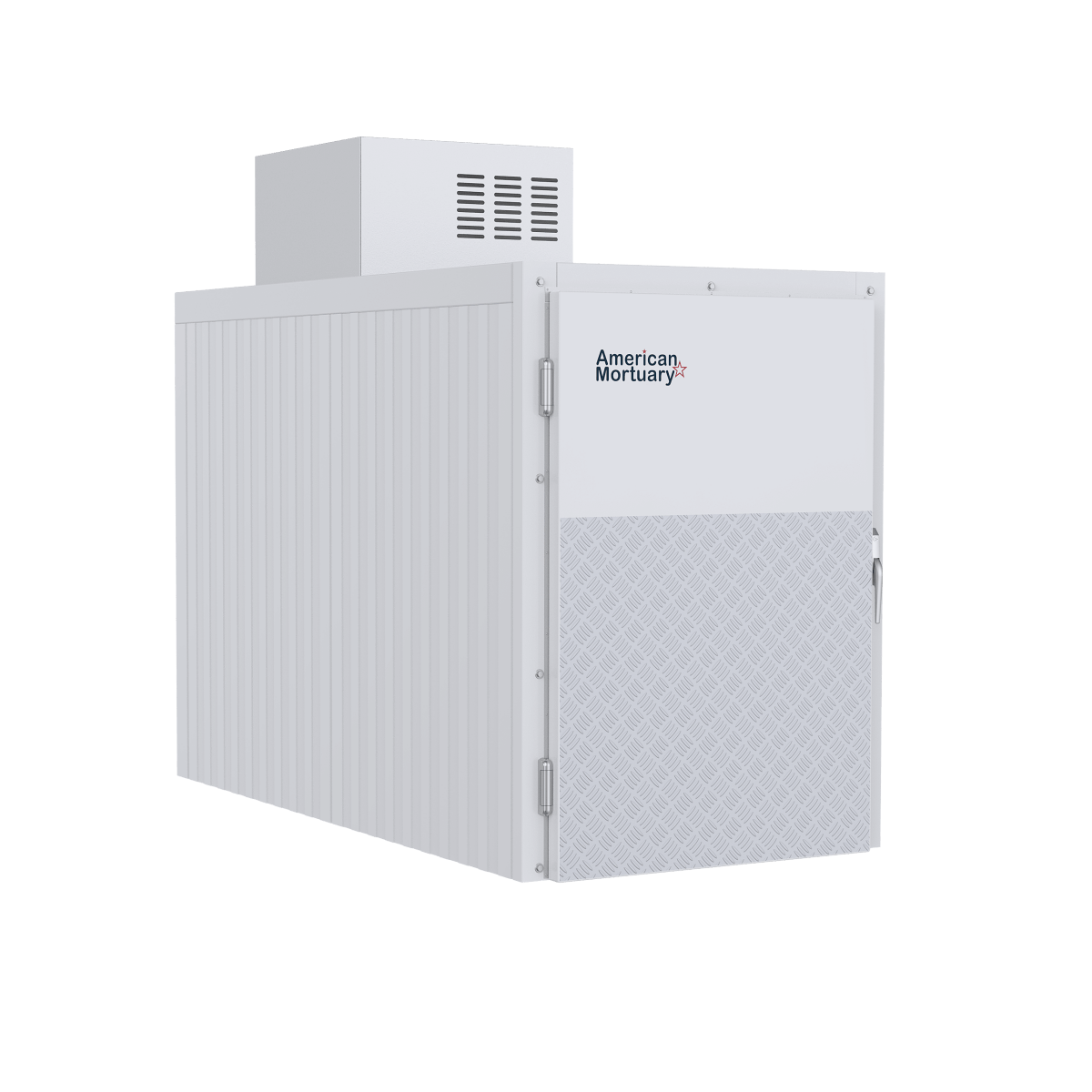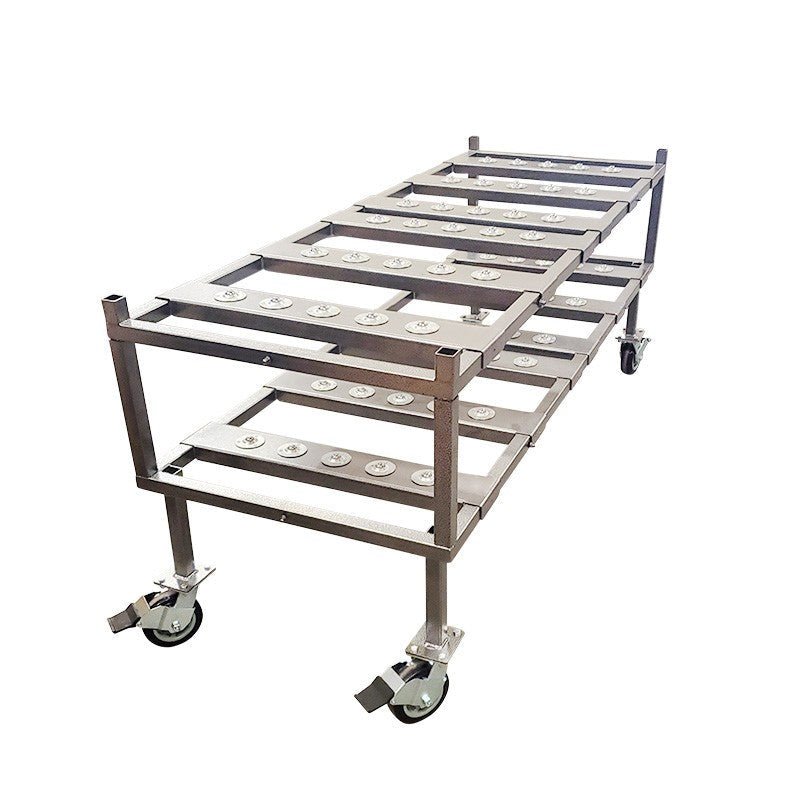Safe Handling: Lifting Bariatric Bodies in the Mortuary Setting
When it comes to how to lift a dead bariatric person at the mortuary, preparation and safety must go hand-in-hand with dignity and respect. The increasing prevalence of obesity in our society means mortuary professionals face this challenge more frequently than ever before. In fact, East Kent Hospitals report their staff handle approximately 30 bodies daily, with some cases weighing as much as 440kg (969 lbs).
As a quick reference, always remember these essential principles: assess weight accurately before attempting any movement, prioritize mechanical assistance with properly rated equipment (400+ lbs minimum), ensure you have adequate staffing (4-6 team members for manual handling), use specialized bariatric equipment like reinforced cots and transfer mattresses, coordinate with clear verbal commands, and above all, maintain the dignity of the deceased throughout the process.
I've worked with funeral homes across the country through American Mortuary Coolers, and I've seen how proper equipment and training transform this challenging aspect of mortuary work. The right approach protects both your staff from potentially career-ending injuries and preserves the respectful treatment every deceased person deserves.

The workflow illustrated above shows the coordinated approach needed when handling bariatric cases. Notice how each step emphasizes both safety and dignity – this balance is essential for professional mortuary care.
When selecting equipment for your facility, consider investing in reliable mortuary hydraulic body lifts that can handle substantial weight with minimal staff effort. A quality mortuary lift table provides both the necessary elevation adjustment and stability required for safe transfers. Don't overlook the importance of proper straps for mortuary lifts – these seemingly simple components are critical for secure handling.
How to lift a dead bariatric person at the mortuary isn't just about physical capability – it's about creating a systematic approach that respects the deceased while protecting your team. At American Mortuary Coolers, we understand these challenges intimately and have designed our equipment specifically to address the growing need for bariatric-capable mortuary facilities nationwide.
Bariatric Bodies in the Mortuary: Definitions, Challenges, Legal & Ethical
When we talk about bariatric cases in the mortuary setting, we're typically referring to deceased individuals weighing over 300 pounds. This is the general threshold where many standard funeral homes classify someone as "oversized" or "bariatric," though this benchmark can vary depending on what equipment your facility has available.
But weight is just one part of the story. The unique challenges of how to lift a dead bariatric person at the mortuary go beyond just the numbers on a scale. Body composition matters tremendously – a person with significant abdominal mass presents very different handling challenges than someone with more evenly distributed weight. Postmortem changes can further complicate these situations, making specialized knowledge essential.

I've spoken with mortuary professionals who've handled bodies exceeding 969 pounds (440 kg) – situations that absolutely require specialized equipment and additional staff. When you consider that standard mortuary equipment typically maxes out at 400-500 pounds, you can understand why proper preparation matters so much.
From both legal and ethical standpoints, dignity must remain our north star. Mortuaries carry a legal duty of care to both the deceased and their staff. This means providing respectful care regardless of size, ensuring staff safety through proper equipment and training, maintaining privacy throughout the process, and following all OSHA guidelines. Research published in the Journal of Forensic and Legal Medicine further emphasizes these responsibilities and best practices.
Why "Bariatric" Matters for Risk and Liability
The term "bariatric" isn't just a descriptor – it signals the need for specialized approaches to prevent workplace injuries and potential liability issues. I've seen too many funeral homes learn this lesson the hard way.
Musculoskeletal injuries are incredibly common in our industry, with manual handling of heavier bodies being a primary culprit. In one case that still makes me wince, a healthcare worker suffered a serious back injury while moving a bariatric patient without proper equipment – resulting in an £800,000 settlement. Similar risks exist in every mortuary.
Improper handling can lead to staff injuries requiring medical leave, damage to facilities or equipment not rated for bariatric weights, potential damage to the deceased's remains (causing immense family distress), and OSHA violations with their associated penalties.
At American Mortuary Coolers, we've consistently observed that facilities with proper bariatric handling equipment report significantly fewer workplace injuries. Investing in appropriate equipment isn't just about dignity – it protects your business from substantial liability and keeps your team healthy.
Communicating Weight, Size, and Costs with Families
Perhaps the most delicate aspect of bariatric cases is discussing additional requirements and potential costs with grieving families. These conversations require tremendous sensitivity while still ensuring you get the information needed to provide proper care.
Louise Pachella, a respected funeral industry professional, puts it perfectly: "Funeral professionals aren't fat-shaming—they're simply under-equipped, which results in passive discrimination. Families should be honest about decedent weight on the first call to ensure respectful and safe service."
When having these conversations, use neutral, professional terminology like "specialized equipment" or "additional resources." Explain that accurate weight information ensures proper dignity and care. Focus on the need for appropriate equipment rather than difficulties, and be transparent about any additional costs while explaining why they're necessary.
Most families simply don't realize the logistical challenges involved. With clear, compassionate communication, they'll understand that additional measures aren't about imposing unnecessary fees – they're about providing the best care possible for their loved one.
Many funeral homes find that creating a standardized, dignified approach to these conversations helps ensure families receive consistent information while preserving everyone's comfort during a difficult time. Your goal is to honor the deceased while supporting their loved ones through the process with warmth and understanding.
Gear Up: Equipment, Facility Modifications, Staffing & Training
When it comes to how to lift a dead bariatric person at the mortuary, having the right equipment isn't just convenient—it's essential. At American Mortuary Coolers, we've seen how proper equipment makes all the difference between stress and smooth operations. Think of it as an investment that pays for itself through fewer injuries, better workflow, and the ability to serve every family with equal care.
Choosing the Right Mechanical Aid
The world of bariatric lifting equipment has come a long way, and today's options are both safer and more dignified than ever before.
Battery-powered mortuary lifts bring flexibility to your facility. These portable units can follow you wherever they're needed, with no cords to trip over. When shopping for one, focus on weight capacity (aim for at least 600 pounds), battery life (nothing worse than a lift dying mid-transfer), and single-operator friendliness. The BodyHoist, for example, handles up to 606 pounds and lets a single staff member safely move the deceased without breaking their back in the process.
Ceiling-mounted hoist systems might look like a bigger commitment—and they are—but they're worth considering if bariatric cases are becoming more common at your facility. These overhead systems keep equipment off your floor (giving you more workspace) and typically offer higher weight capacities, often handling 880+ pounds. One funeral director told me, "It was like getting an extra staff member who never calls in sick." Our research shows that a comprehensive ceiling system (including 250 disposable lift sheets) can dramatically reduce those costly workplace injuries.
For transport needs, hydraulic scissor trolleys and multi-level cots provide both lifting and moving functions in one unit. The best ones adjust to match different surface heights, feature reinforced frames rated for 1,000+ pounds, and include safety locks to prevent unwanted movement during transport.

Don't overlook transfer mattresses and slide systems like the Bodypod. These clever devices distribute weight across a larger surface and use gravity to your advantage on slight inclines. With 7 cm thick foam cushioning and materials like Dyneema®, they protect both the deceased and your staff. They're particularly handy in those tight corners where bulkier equipment simply won't fit.
Facility Must-Haves for Oversized Cases
Sometimes the facility itself needs updates to safely handle bariatric cases. Standard embalming tables typically tap out at 300-500 pounds, so consider reinforced bariatric tables with wider surfaces (at least 40 inches), stronger frames, and height adjustability to save your staff's backs during preparation.
Doorways matter more than you might think. A bariatric cot won't do you much good if it can't fit through your doorway! Aim for at least 40 inches of clear width in key areas, and consider removable door frames or double doors at strategic points. While you're at it, check that your door hinges can handle the extra weight, and eliminate any lips or thresholds that could turn into tripping hazards.
Refrigeration is our specialty at American Mortuary Coolers, and we've designed custom solutions for many facilities facing bariatric challenges. The key features? Wider compartments (minimum 40 inches), reinforced shelving that won't buckle under pressure, and doors that open fully for obstacle-free transfers. Our custom coolers have helped funeral homes from Tennessee to Georgia better serve their communities with dignity.
Don't forget the less obvious infrastructure needs: extra power outlets for charging lift equipment, reinforced flooring in transfer areas, ceiling structures strong enough for mounted systems, and plenty of lighting to see what you're doing during complex moves.
Team Size & Training Essentials
Even the best equipment needs skilled operators. For manual bariatric handling (which we don't recommend, but sometimes can't be avoided), gather at least 4-6 staff members. Mechanical lifts typically need at least two trained operators, plus a team leader calling the shots with clear commands. Always have staff trained in backup procedures for those moments when equipment decides to take a day off.
Training isn't a one-and-done deal. Effective programs include hands-on practice with the actual equipment you'll be using, regular refresher drills with simulated weights, and cross-training to ensure you're not left shorthanded when someone takes vacation. Document everything—both for liability protection and to track who needs refresher courses.

Personal protective equipment matters too. Back braces or support belts can provide that extra bit of protection during unexpected movements. Non-slip footwear with good support keeps everyone grounded, while proper gloves improve grip when handling transfer sheets or equipment. And of course, appropriate infection control barriers remain essential regardless of the deceased's size.
After serving funeral homes across the country—from the hills of Tennessee to the shores of Georgia and the plains of Illinois—we've consistently seen that success comes from a three-part approach: proper equipment, thoughtful facility design, and well-trained staff. Together, these elements create both a safer workplace and a more dignified experience for the families you serve.
How to Lift a Dead Bariatric Person at the Mortuary: The Step-by-Step Playbook
Now that we've covered the equipment and preparation, let's walk through the specific steps for how to lift a dead bariatric person at the mortuary safely and with dignity. This process actually begins well before anyone touches the deceased.
Pre-Lift Assessment and Planning
Safety starts with proper planning. Before attempting any lift, gather accurate information about the deceased's weight (or make a careful estimate if exact weight is unknown). Note any physical characteristics that might affect handling, such as rigor mortis or fluid accumulation.
It's crucial to select lifting equipment with capacity exceeding the estimated weight by at least 20%. Nothing creates a more dangerous situation than equipment operating at its maximum capacity. Always inspect your equipment before use and verify battery charge on powered devices.
Your team needs clear direction, so take time to brief everyone on their specific roles. Designate a confident team leader who'll coordinate movements and handle any unexpected situations. The environment matters too – clear the path between locations, remove obstacles, and ensure your destination surface is positioned at the appropriate height.
Preparing the body is equally important. Place the deceased in appropriate containment, position any straps or slings before attempting to lift, and ensure proper alignment for a smooth transfer.

How to Lift a Dead Bariatric Person at the Mortuary with a Powered Lift
When using a powered lift system, proper positioning makes all the difference. Start by placing your lift device right next to the body. Lower it to match the height of the current surface, and lock any wheels or stabilizing mechanisms. Always verify the lifting mechanism is working properly with a quick test operation before placing it under load.
For sling placement, the Mortuary Body Sling system works wonderfully. Feed five slings through each handle of your transfer sheet (or directly underneath the body bag if necessary). Ensure even spacing for balanced weight distribution – this prevents tipping and potential injury. Each sling should be rated for appropriate weight (typically 1500 kg per sling).
If you're using a BodyHoist or similar device, position the shoulder rods between shoulders and elbows, support the head with the designated headband, and adjust ankle width up to 350 mm as needed. Weight distribution varies with body shape, so take time to verify the balance point is properly set.
The moment of truth comes during attachment and initial lift. Connect all slings to the lift device securely and double-check connections before proceeding. Clear all staff from beneath the lift path – this simple step prevents many potential injuries. Raise the device slightly (just 1-2 inches) and pause to verify stability before continuing.
For the complete lift and transfer, raise to the needed height, move as a coordinated unit to the destination, position directly over the surface, and lower slowly until the body rests completely. Watch carefully to ensure no part of the body or containment gets caught during lowering.
Single operators using devices like the BodyHoist should follow the "Lifting, Adjustment, Transfer, Positioning, Vice versa" protocol. Use the red handle to open forks when releasing the body, maintaining control throughout the process.
How to Lift a Dead Bariatric Person at the Mortuary When Equipment Fails
Despite our best preparations, equipment sometimes fails. In these cases, manual lifting becomes necessary, though it should always be your last resort for bariatric cases.
When manual lifting is unavoidable, gather a minimum of 6-8 staff members. Position your strongest team members at the heaviest portions of the body. Everyone needs solid footing and proper body mechanics – straight backs, bent knees, and weight close to the body. Your designated team leader should call commands clearly to ensure synchronized movement.
Assistive devices become even more important during manual lifts. Place a slide sheet or Body Slider underneath the deceased to reduce friction. Position transfer boards between surfaces if available. The Bodypod Transfer Mattress offers exceptional gravity-assisted capabilities that can save your team's backs.
Coordinated movement is essential. Your team leader should count down to ensure everyone lifts simultaneously using legs, not backs. Move slowly and deliberately as a unit, and encourage immediate communication if anyone experiences problems. Slow and steady wins the race – and prevents injuries.
During transfer and placement, minimize the distance and time the body is carried. Use sliding techniques rather than carrying whenever possible. Lower gradually and evenly to the destination surface, ensuring no team member bears disproportionate weight.
For longer transfers, incorporate safety checkpoints. Pause periodically to reassess and adjust. Rotate team members if fatigue becomes evident. Don't hesitate to abort the manual lift if safety concerns arise – better to regroup than risk injury.

Securing and Transferring to Storage or Coffin
After successfully lifting, proper securing for storage or final placement maintains dignity and safety. For refrigerated storage, ensure the cooler shelf or compartment is rated for the weight. Use a bariatric tray with reinforced construction and position the body fully with proper alignment. Secure any covers to prevent shifting and verify appropriate cooler temperature.
At American Mortuary Coolers, we've designed our custom bariatric coolers with reinforced shelving and wider compartments specifically for these challenging cases. Our units from New York to Los Angeles accommodate bariatric cases safely without compromise.
For coffin placement, first verify the coffin is appropriately sized. Oversized caskets typically start at 31" wide and can go up to 52" wide for bariatric needs. Position your lift directly over the coffin center and lower slowly to avoid impact with the sides. A ceiling hoist system offers the most controlled placement in these situations.
The beauty of the Mortuary Body Sling is how it simplifies lowering the deceased into coffins. Once the body is fully supported by the coffin, you can simply slide out each sling afterward – no need to lift the body again.
When loading transport vehicles, use a hydraulic tail lift rated for bariatric weights (2,000+ lbs). Secure the transport cart using wall-mounted channel tracks and ratchet straps, and verify all locking mechanisms before movement. For especially large cases, consider using wider transport vehicles when standard hearses cannot accommodate.
Frequently Asked Questions about Bariatric Body Handling
What is the safe working load for most bariatric lifts?
When it comes to lifting equipment, knowing your weight limits isn't just good practice—it's essential for safety. Most standard mortuary lifts can handle between 400-600 pounds, which works for many situations, but specialized bariatric equipment takes things further.
The popular BodyHoist, for example, safely manages 275 kg (that's about 606 pounds), which covers many bariatric cases. For more substantial needs, specialized mortuary body slings can transfer individuals weighing over 500 kg (1,102 pounds)—truly impressive engineering that helps maintain dignity and safety.
Here at American Mortuary Coolers, we always recommend choosing equipment rated at least 20% above your anticipated maximum weight. This buffer isn't just cautious—it provides real peace of mind when you're handling these delicate situations. Manufacturer ratings exist for good reason, and exceeding them puts everyone at risk.
How many staff members are needed if no hoist is available?
Sometimes, despite our best preparations, mechanical aids aren't available. In these situations, having enough hands on deck becomes crucial. For bodies weighing 300-400 pounds, you'll need at least 4-6 trained staff members working together. When weight increases to 400-500 pounds, that number jumps to 6-8 people. For anyone over 500 pounds, you're looking at 8 or more specially trained staff.
That said, I have to be straight with you—manual lifting for bariatric cases should be your absolute last resort. The risk to your team is substantial, and even with perfect technique, you're gambling with potential injuries that could affect someone's career and quality of life. Plus, manual handling increases the risk of compromising the deceased's dignity during the process.
Investing in proper equipment isn't just safer—it's actually more cost-effective when you consider potential workers' compensation claims and lost workdays from injuries. One back surgery can cost more than the finest lift system on the market.
How do I maintain dignity during a complicated removal?
Maintaining dignity isn't just an afterthought—it should be woven into every step of the process. When handling bariatric cases, this becomes even more important as the process can be more complex.
Concealment during transport makes a world of difference. Products like the CCT3687 Concealed Cadaver Transport Cart shield the deceased from public view, which matters tremendously when moving through shared spaces. This consideration helps protect families from additional distress during an already difficult time.
Keeping the body appropriately covered throughout the process also preserves dignity. Only expose areas that are absolutely necessary for the specific handling task at hand. Your team's language matters too—using neutral, professional terminology when discussing the deceased, both with the family and among yourselves, demonstrates respect.
Preparation is dignity's best friend. Having the right equipment ready prevents those awkward moments of improvisation that might compromise the deceased's dignity. Beyond the mechanics, take time to train your staff specifically on the dignity aspects of their work. Help them understand the emotional impact proper handling has on families.
As one of our funeral partners beautifully puts it: "Every farewell deserves dignity and care." This principle holds true regardless of size or handling complexity.
What should I do if a bariatric body exceeds my equipment capacity?
Even the best-prepared facilities occasionally encounter cases that exceed their equipment capacity. When this happens, don't panic—you have options.
First, check if specialized bariatric removal services operate in your area. These professionals have equipment and expertise specifically for exceptional cases. Local healthcare facilities can be valuable allies too—hospitals often have higher-capacity equipment and may be willing to assist in extraordinary circumstances.
For one-time situations, consider temporary equipment rental. Several companies offer short-term rentals of bariatric handling devices. In truly exceptional cases, don't hesitate to consult with emergency services, who often have experience with ultra-bariatric cases through their medical response work.
At American Mortuary Coolers, we're always available to provide guidance on equipment solutions for these challenging situations. Whether you need advice on custom-built coolers or recommendations for appropriate handling equipment, we understand the unique demands of bariatric cases and can help you steer them with confidence and compassion.
Conclusion
The challenge of how to lift a dead bariatric person at the mortuary isn't just a technical problem—it's about balancing dignity, safety, and practicality in increasingly common situations. As our communities change, so must our approaches to mortuary care.
Throughout my years working with funeral homes across the country, I've seen how proper preparation transforms these difficult situations into manageable, respectful processes. The most successful facilities don't wait until they're faced with a challenging case—they prepare in advance.
Investing in appropriate equipment is perhaps the most important step you can take. When that powered lift safely handles a 500-pound deceased individual without strain or risk to your staff, the initial investment suddenly seems incredibly worthwhile. I've heard countless funeral directors say, "I wish we'd bought this years ago" after their first experience using proper bariatric equipment.
Your facility itself might need thoughtful modifications. Those wider doorways, reinforced tables, and specialized refrigeration units aren't just practical improvements—they're statements about your commitment to serving every family with equal care. When a grieving family doesn't have to worry about whether their loved one can be accommodated, you've given them one less burden during an already difficult time.
Staff training creates confidence. I remember visiting a funeral home in Georgia where the director had implemented monthly drills for bariatric handling. The difference in staff demeanor was remarkable—no anxiety, just quiet competence when faced with challenging cases. That confidence translates directly to how families perceive your care.
The way we communicate about these situations matters deeply. The most respected professionals I know have mastered discussing bariatric arrangements with a blend of clarity and sensitivity. They help families understand the practical requirements without ever diminishing the dignity of their loved one.
At American Mortuary Coolers, we've built our business around understanding these unique challenges. Our custom mortuary coolers are designed with real-world situations in mind—including the increasingly common bariatric cases that standard equipment simply can't accommodate. From Tennessee to California, from Illinois to New York, we deliver specialized solutions that help you provide dignified care no matter the circumstances.
The techniques and equipment recommendations in this guide represent both best practices and practical wisdom from mortuary professionals nationwide. By implementing these approaches, you ensure that no burden becomes too heavy—for your staff or for the families who place their trust in your care.
Every person who comes into your care deserves the same dignity, respect, and professionalism. With proper equipment, thoughtful facilities, well-trained staff, and compassionate communication, you can ensure that size never limits the quality of care you provide.


